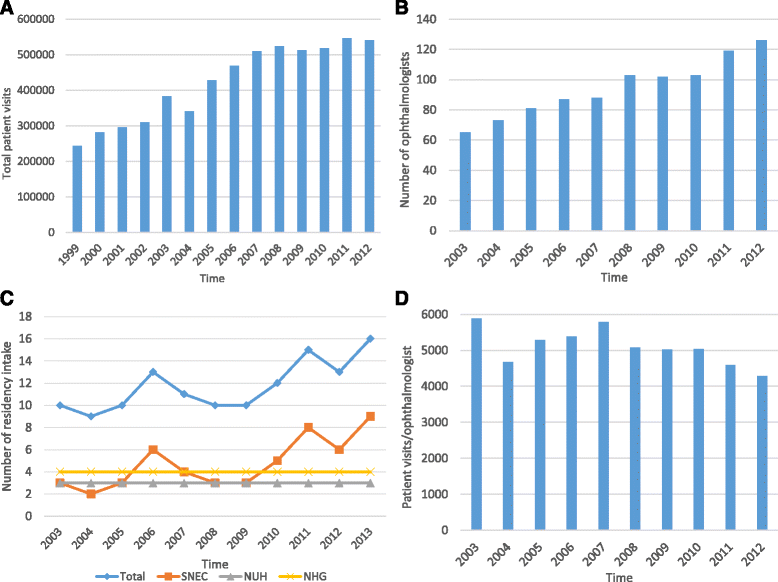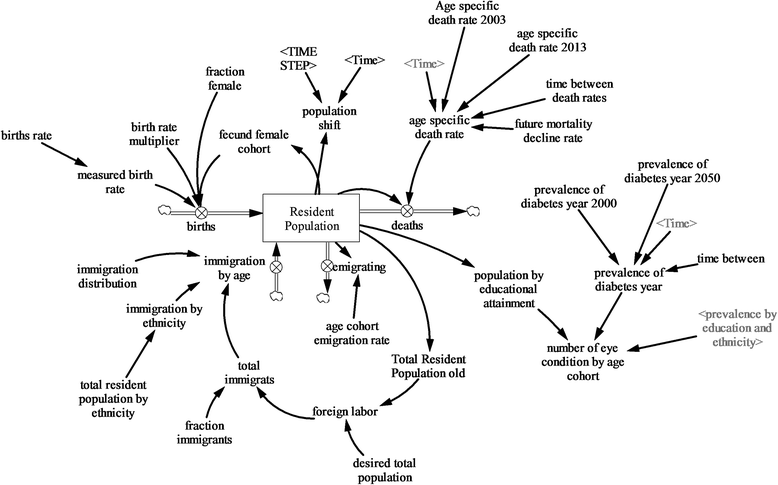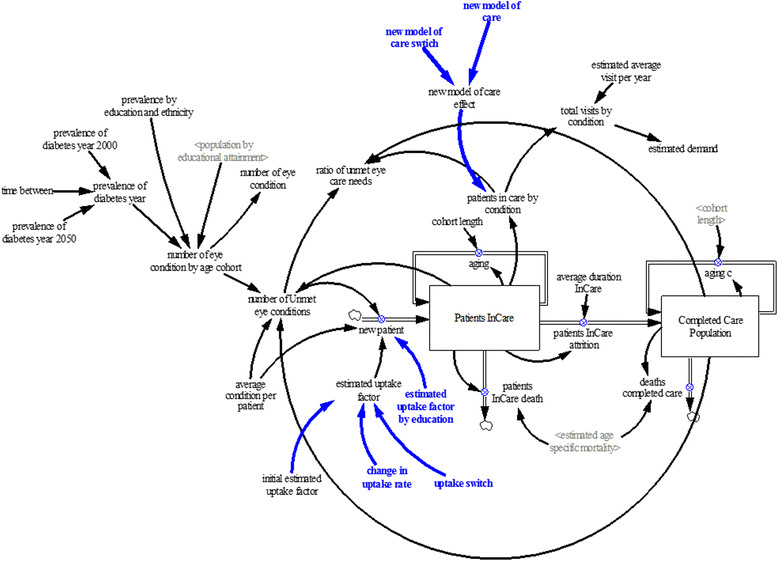Future requirements for and supply of ophthalmologists for an aging population in Singapore
- PMID: 26578002
- PMCID: PMC4650855
- DOI: 10.1186/s12960-015-0085-4
Future requirements for and supply of ophthalmologists for an aging population in Singapore
Abstract
Background: Singapore's population, as that of many other countries, is aging; this is likely to lead to an increase in eye diseases and the demand for eye care. Since ophthalmologist training is long and expensive, early planning is essential. This paper forecasts workforce and training requirements for Singapore up to the year 2040 under several plausible future scenarios.
Methods: The Singapore Eye Care Workforce Model was created as a continuous time compartment model with explicit workforce stocks using system dynamics. The model has three modules: prevalence of eye disease, demand, and workforce requirements. The model is used to simulate the prevalence of eye diseases, patient visits, and workforce requirements for the public sector under different scenarios in order to determine training requirements.
Results: Four scenarios were constructed. Under the baseline business-as-usual scenario, the required number of ophthalmologists is projected to increase by 117% from 2015 to 2040. Under the current policy scenario (assuming an increase of service uptake due to increased awareness, availability, and accessibility of eye care services), the increase will be 175%, while under the new model of care scenario (considering the additional effect of providing some services by non-ophthalmologists) the increase will only be 150%. The moderated workload scenario (assuming in addition a reduction of the clinical workload) projects an increase in the required number of ophthalmologists of 192% by 2040. Considering the uncertainties in the projected demand for eye care services, under the business-as-usual scenario, a residency intake of 8-22 residents per year is required, 17-21 under the current policy scenario, 14-18 under the new model of care scenario, and, under the moderated workload scenario, an intake of 18-23 residents per year is required.
Conclusions: The results show that under all scenarios considered, Singapore's aging and growing population will result in an almost doubling of the number of Singaporeans with eye conditions, a significant increase in public sector eye care demand and, consequently, a greater requirement for ophthalmologists.
Figures




References
-
- Asher MG, Nandy A. Singapore’s policy responses to ageing, inequality and poverty: an assessment. Int Soc Sec Rev. 2008;61(1):41–60. doi: 10.1111/j.1468-246X.2007.00302.x. - DOI
-
- World Economic Outlook Database. International Monetary Fund. 2014. http://www.imf.org/external/pubs/ft/weo/2014/02/weodata/weorept.aspx?pr..... Accessed March 2015.
-
- MOH . Market share statistics for ophthalmology in the public sector hospitals. 2012.
Publication types
MeSH terms
LinkOut - more resources
Full Text Sources
Other Literature Sources
Medical

